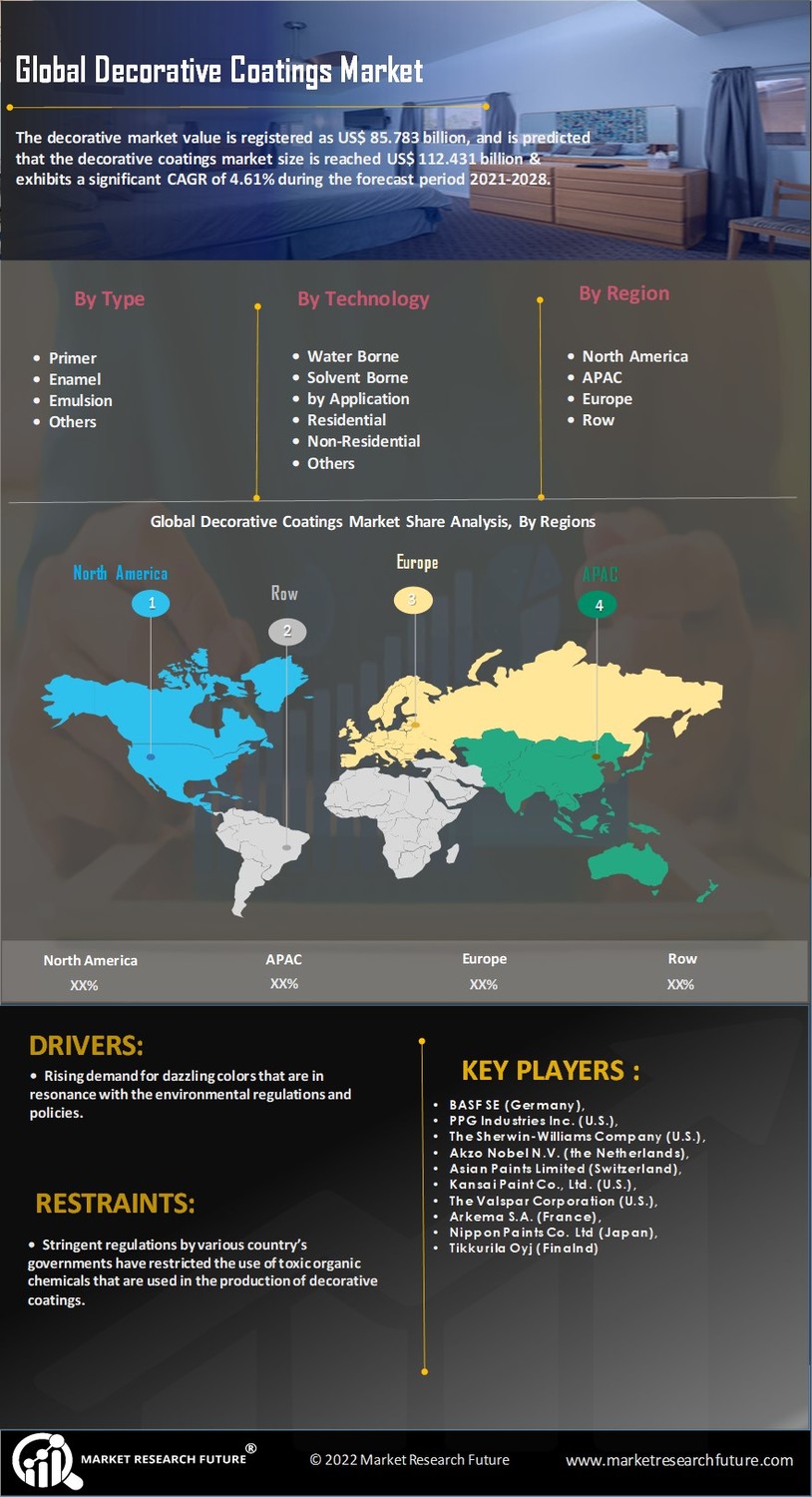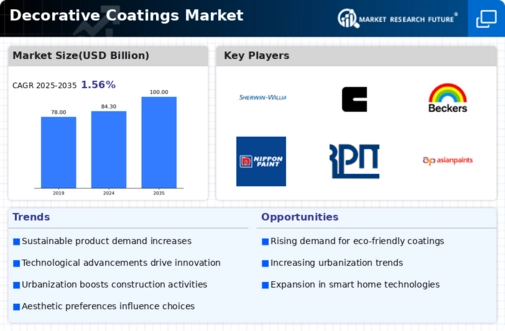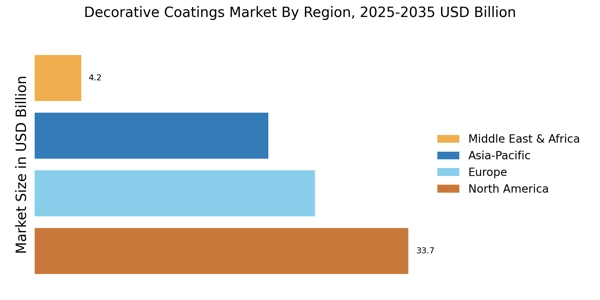DIY Culture
The rise of the DIY culture is reshaping the Decorative Coatings Market. More consumers are engaging in home improvement projects, driven by a desire for personalization and cost savings. This trend has led to an increased demand for decorative coatings that are user-friendly and versatile. Retailers are responding by expanding their product offerings, providing a wide range of colors, finishes, and application methods suitable for DIY enthusiasts. The market for DIY decorative coatings is anticipated to grow, with projections indicating a potential increase of around 7% in sales over the next few years. This shift not only empowers consumers but also creates new opportunities for manufacturers to cater to this burgeoning segment.
Aesthetic Trends
Aesthetic trends are a crucial driver in the Decorative Coatings Market. As consumer preferences evolve, there is a growing demand for coatings that offer unique textures, colors, and finishes. The influence of design trends, such as minimalism and biophilic design, is prompting manufacturers to innovate and create products that align with these aesthetics. Additionally, the rise of social media platforms has amplified the visibility of design ideas, further fueling consumer interest in decorative coatings. This trend is likely to result in a competitive landscape where companies must continuously adapt to changing tastes. The Decorative Coatings Market is expected to see a growth rate of approximately 5% as brands strive to meet the diverse aesthetic demands of consumers.
Urbanization Trends
Urbanization trends are significantly impacting the Decorative Coatings Market. As urban areas expand, there is an increasing demand for residential and commercial properties, which in turn drives the need for decorative coatings. The construction sector is projected to grow, with estimates indicating a rise in new building projects and renovations. This growth is particularly evident in emerging markets, where urbanization rates are accelerating. The demand for aesthetically pleasing and durable coatings is likely to increase as urban dwellers seek to enhance their living and working environments. Consequently, the Decorative Coatings Market is expected to benefit from this trend, with a projected increase in market size by approximately 6% over the next few years.
Technological Innovations
Technological innovations play a pivotal role in shaping the Decorative Coatings Market. Advancements in application techniques, such as spray technology and digital printing, have revolutionized how coatings are applied, enhancing efficiency and reducing waste. Moreover, the integration of smart coatings, which can change properties in response to environmental stimuli, is gaining traction. These innovations not only improve the performance of decorative coatings but also expand their functional capabilities. The market is witnessing a shift towards coatings that offer enhanced durability, resistance to environmental factors, and aesthetic appeal. As a result, manufacturers are likely to invest heavily in technology to stay competitive, potentially leading to a market growth rate of around 4% annually over the next few years.
Sustainability Initiatives
The Decorative Coatings Market is increasingly influenced by sustainability initiatives. Consumers and manufacturers alike are prioritizing eco-friendly products, leading to a surge in demand for low-VOC and water-based coatings. This shift is not merely a trend but a response to regulatory pressures and consumer preferences for environmentally responsible options. As a result, companies are investing in research and development to create innovative formulations that meet these criteria. The market for sustainable decorative coatings is projected to grow significantly, with estimates suggesting a compound annual growth rate of over 5% in the coming years. This focus on sustainability not only enhances brand reputation but also aligns with broader environmental goals, making it a critical driver in the Decorative Coatings Market.



















Leave a Comment